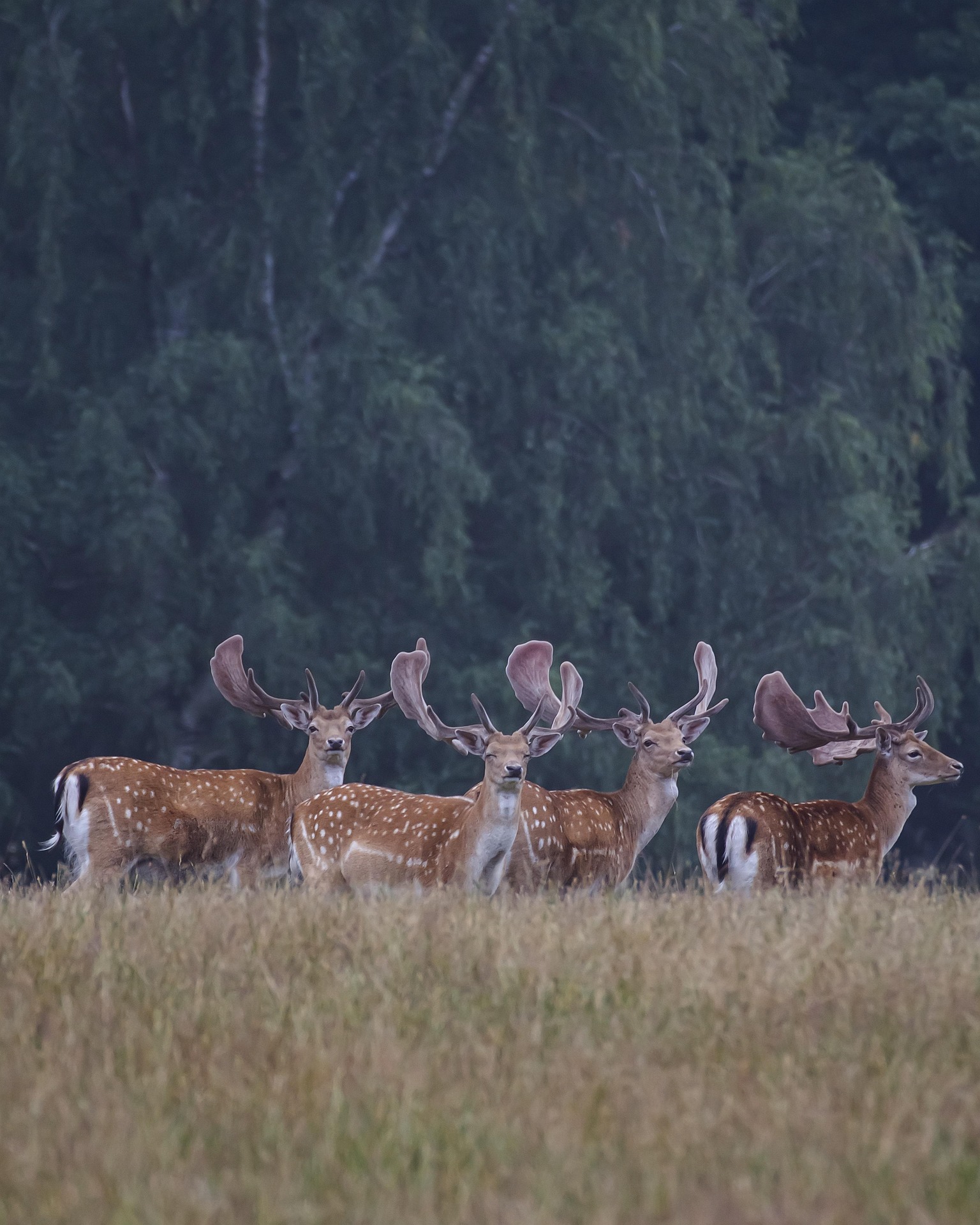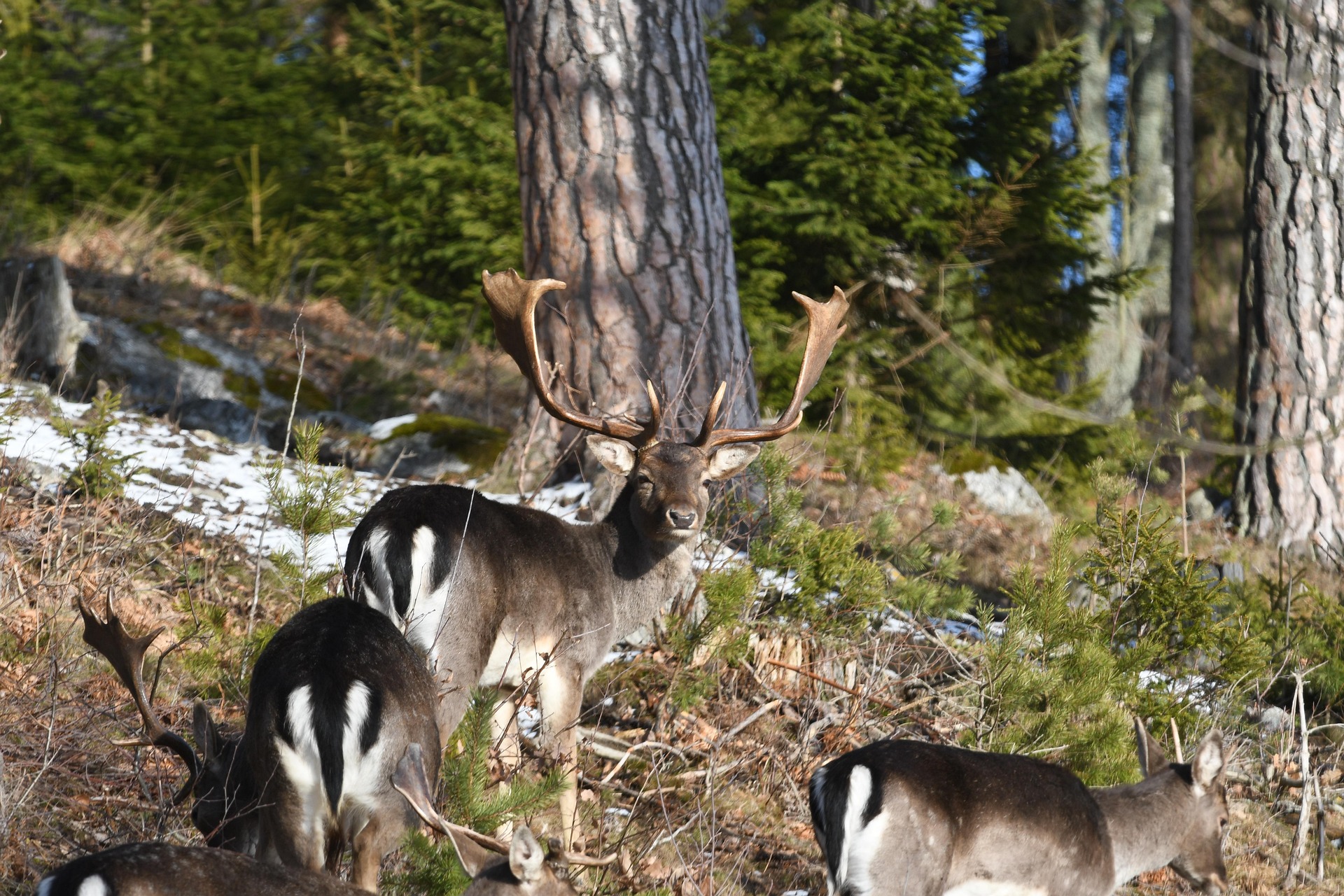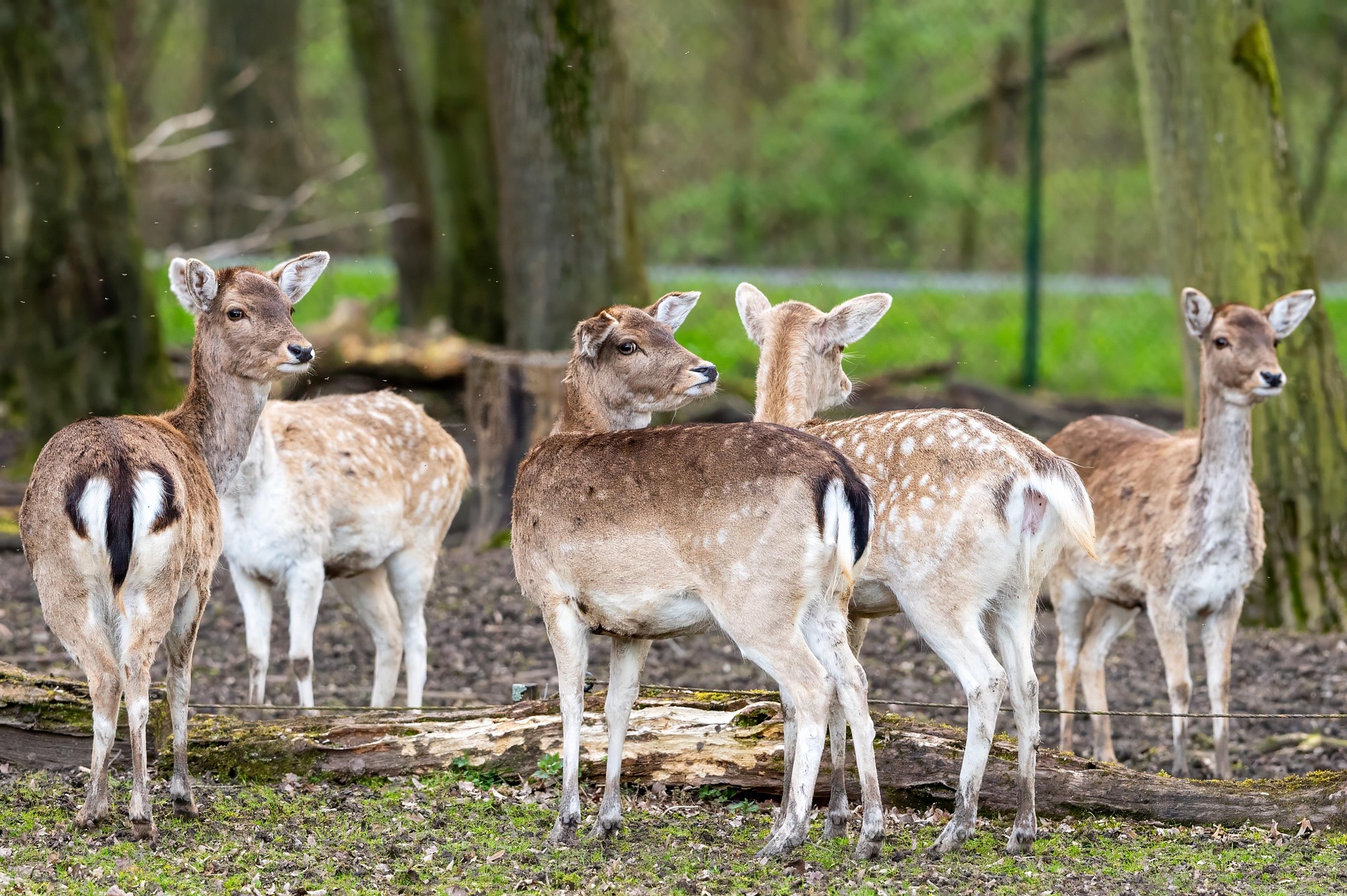Fallow deer



Characteristics:
The fallow deer is slightly smaller and more slender than the red deer, measuring 130–170 cm in length and about 90–110 cm high at the shoulder. The coat color varies — most often reddish-brown with white spots in summer and grey-brown without spots in winter. There are also darker and almost white color variations. The male (buck) has large, broad, palm-shaped antlers that are shed each winter and regrown in spring. The female (doe) is smaller and lacks antlers.
Distribution:
Fallow deer are mainly found in southern and central Sweden, often in deciduous or mixed forests near open fields and farmland. They are common in enclosed game estates but also occur freely in the wild.
Diet:
Fallow deer feed on grasses, herbs, leaves, acorns, mushrooms, and various crops. They prefer to graze in open fields but seek shelter in the forest during the day.
Young:
The does usually give birth to one fawn (rarely two) in June–July. The fawn is light brown with white spots, providing camouflage during the first months of life.
Rut:
The rutting season takes place in October–November.
Calls:
During the rut, the male produces a characteristic hoarse grunting or groaning sound while attracting does and defending his territory.
Tracks:
Fallow deer tracks are smaller and rounder than red deer tracks, about 5–7 cm long. They can sometimes resemble roe deer tracks but are broader and deeper.
Hunting:
Fallow deer are hunted in autumn through stalking, stand, or driven hunts. They are cautious animals but may appear in larger groups, especially during winter.
Weapon Class:
Hunting fallow deer requires a Class 1 rifle, meaning ammunition with at least 2,700 joules of energy at 100 meters.
